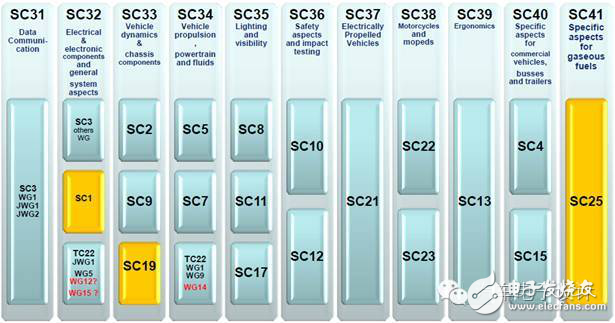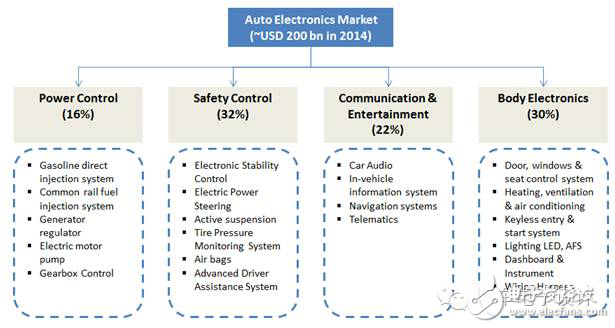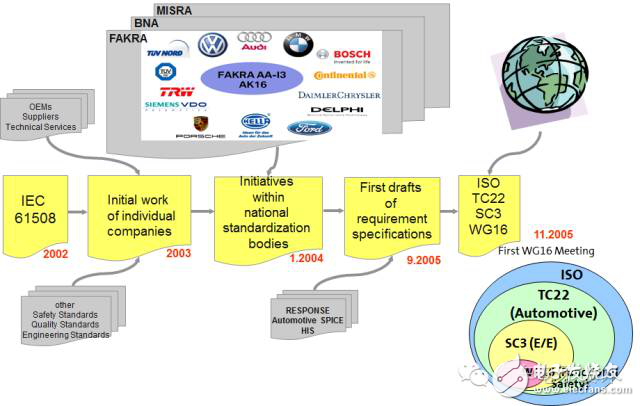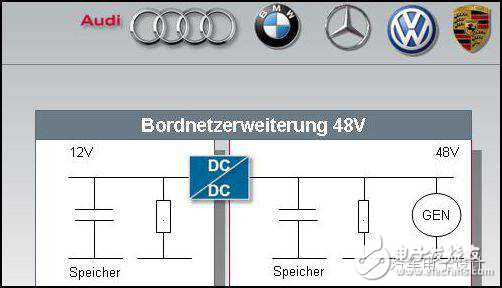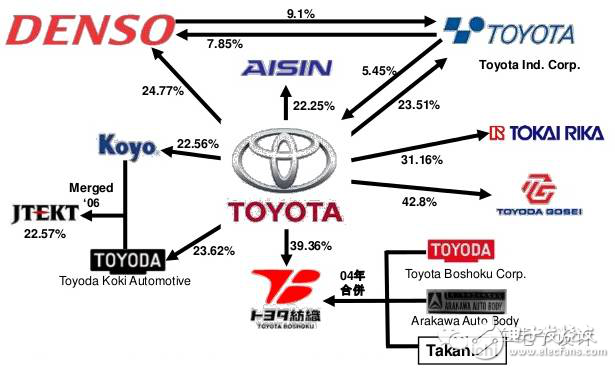Engineers talk about automotive electronics standard routes and application challenges
In the face of auto cost pressure, "Who benefits from automotive electronics standards?" "Who profits from automoTIve electronics standards?" Facing cost pressures, there are still many good ideas. I am doing some excerpts here: 1. German automotive OEMs actively apply international standards and benefit from them 2. Japanese OEMs benefit from their local-wide automotive standards 3. For Chinese OEMs, there is no international standard but the best The standard of automotive electronics itself has a certain meaning: automotive electronic systems are becoming more and more complex, and providing basic standards from the ISO system is beneficial for more people to respond: The standard of automotive electronics is to meet these challenges. In fact, it fundamentally adjusts the industrial structure of the automotive industry and modularizes each functional level of the system. Software and hardware integration & ASIL security levels make work more and more complicated System complexity and new security requirements reduce component reusability The same hardware also needs to be modified for the new system model The software development cycle is also growing 1) German standard route Cost optimization: German OEMs continue to standardize new technologies and seek optimization of R&D costs The establishment of standards allows OEMs to share new technology developments. Therefore, the technical research and development cost can be saved as a whole. Systematization: Standards also standardize the implementation of new components, which can effectively reduce costs and strengthen the traditional strict division of labor and collaboration between OEMs and suppliers: OEM car integrator Large TIer-1 subsystem supplier Other special component suppliers and production plants Industrial linkage: The industrial structure has both horizontal and vertical linkages. The relationship between enterprises is flexible and loose. The technical flow & information flow is based on a certain automobile project. Depending on the size of the supplier and the technical capabilities, Bosch and ConTInental for large TIer 1 will work with all OEMs Small Tier 1 may not be able to support multiple OEMs at the same time In addition to Tier-2 and Tier-3, there are some specialized companies and Tier-1 participating in joint development of OEMs. Competitive advantage: German OEM for the mid-to-high-end car market Introducing technical standards can effectively shield competition from the medium/low end car market Any automotive electronics standard must be a new technology and method proposed at an acceptable cost. The ISO26262 safety-related standard reflects the threshold for Chinese OEMs to enter the European market. The influence of German technical routes in China is very important, to name a few: 48V system 2) The route that the Japanese standard should deal with The scope of application of standards in Japan is limited to a fixed interest chain centered on its corporate group. The advantages of other Japanese OEMs due to their internal standards are also limited to their corporate groups. Japan’s auto industry structure consists of several major corporate groups, and the boundaries between corporate groups are clear. From OEM to Tier-1, Tier-n's architecture is very strict and remains the same in many projects. The relationship between the companies directly reflects the productivity of the enterprise group. Establish a long-term relationship of mutual trust, and even to strengthen communication and cooperation to jointly fund a specific asset of the enterprise group Based on this industrial structure, the vehicle architecture is better integrated, and the OEM seeks the optimal solution from the top level in the contradiction between technology and cost. Japanese OEMs prefer a horizontal cooperative industry model that is limited to enterprise groups. They prefer a closed system model so that they can seek a more mature and optimized division of labor cooperation within the OEM and its associated supplier circles. Remarks: Nissan and Toyota are now completely two ways. simply put: 1. AUTOSAR will vertically layer the system, horizontally modularize, and expand the research and development cost problem to the whole industry to reduce the research and development costs. 2. The safety standards set a high threshold and kept the supply system threshold for the competitive strategy of low-cost car companies in the US and Europe. 3. The benefits of the standard are very beneficial to the world, especially European car companies. System subdivision: Some components are fully standardized, and a unified and universal product is realized. The core components allow manufacturers to customize and realize differentiation. Modularization: Module division in the system software architecture, subdivided into multiple modules to achieve, is conducive to strengthening competition and promoting division of labor; Improve the industrial structure: Establish common rules and internal standards through frequent communication with internal suppliers of the enterprise group. These rules and internal technical standards are conducive to improving productivity and productization. summary: 1) This is also the reason why German car companies are holding standards. Especially in terms of electronics and electrification, German car companies are getting stronger and stronger. 2) In the process of becoming a core of automotive electronics, more and more points need to be broken. Standards and thresholds are the first to bear the brunt.
✿Special Function
-High Current Micro Switch
-Light force Micro Switch
-High&Low Pressure Switch
-3mm Contact Clearence Micro Switch
-Tubular Motor Switch
✿ Material
Made of high quality plastic and metal, rust resistance and corrosion resistance, durable enough for you to hanging items, So the product appearance is exquisite, perfect workmanship.
✿ Rating
You can meet the different RATING daily needs. Please pay attention to the model of the switch before purchase, to ensure that you purchase the same as you need.
✿ Vairous Sizes
Actuator Action is momentary and Actuator Type is long straight hinge lever. Switch Body Size as shown in the picture.So different sizes can meet all your daily different needs.
✿ Wide Application
Home appliance: micro oven, electric cooker, washing machine, electric heater, warmer, water fountain and so on.
Commercial appliance: Vending machine, electric toy, electric tools, duplicating machine and so on.
Machinery: Transport machinery, printing machinery, textile machinery and so on.
Small Micro Switch,Micro On Off Switch,Micro Limit Switch Types,Special Function Micro Switch Ningbo Jialin Electronics Co.,Ltd , https://www.donghai-switch.com